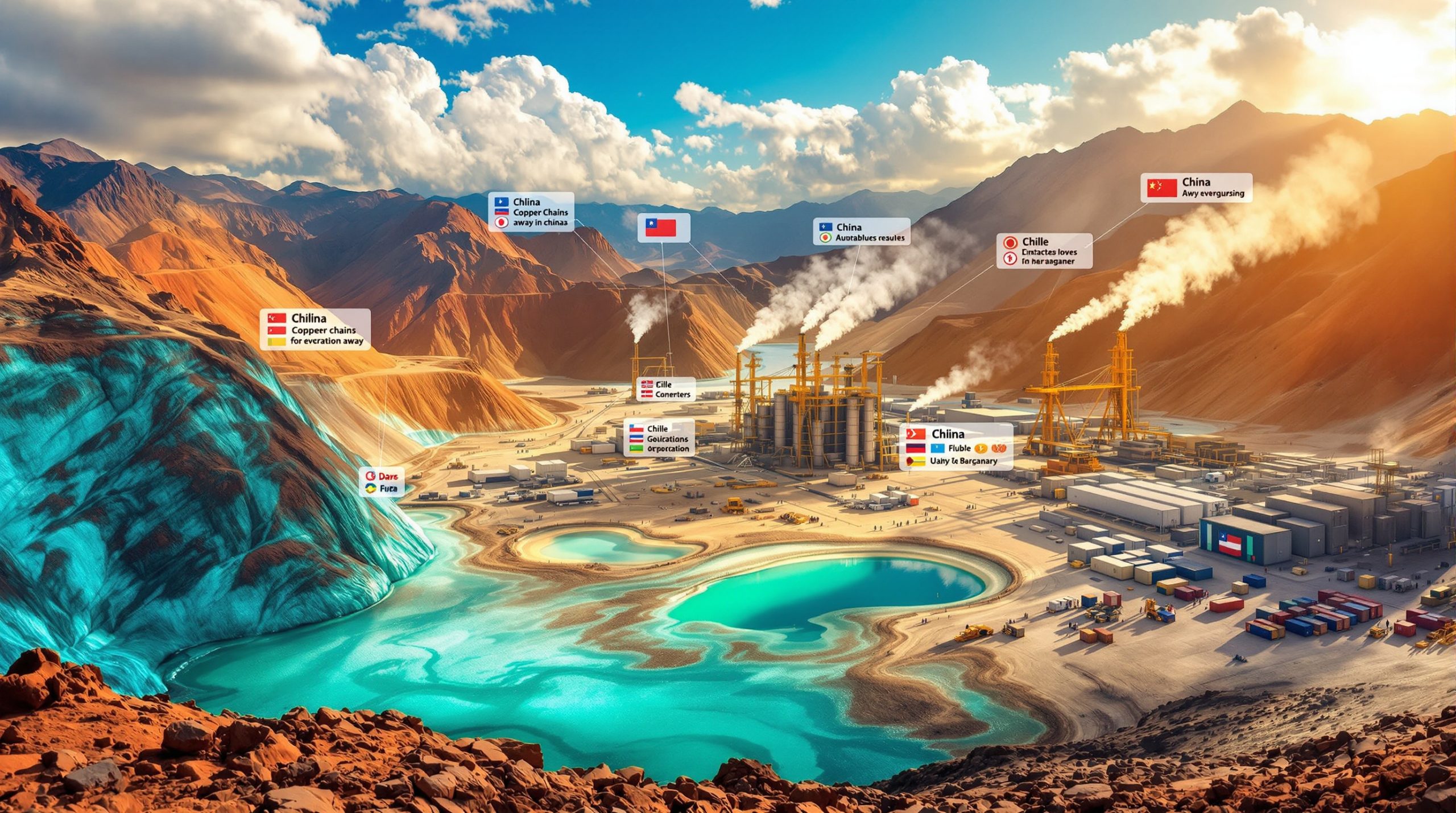Understanding the Canadian Oil Sands Consolidation Trend
The Canadian oil sands industry is experiencing significant transformation through strategic mergers and acquisitions rather than new project development. This shift reflects changing economic realities, environmental pressures, and the industry's maturation. Major players are prioritizing efficiency and scale through Canadian oil sands consolidation rather than investing in costly greenfield developments.
Current Market Dynamics Reshaping the Industry
Canadian oil producers are increasingly pursuing acquisitions of existing operations instead of building new facilities. This strategy allows companies to expand their resource base and production capacity while avoiding the substantial capital expenditure and extended timelines associated with new oil sands projects.
Why Are Companies Buying Instead of Building?
Economics of Acquisition vs. New Development
The financial calculus strongly favors acquisitions in today's market environment. New oil sands projects require massive upfront capital investments spread over many years before generating returns. According to industry analyses, breakeven costs for new oil sands developments average $57 per barrel but can reach as high as $75 per barrel, making them among the most expensive sources of new oil supply globally.
In contrast, existing operations have much lower operating costs, with breakeven points below $50 per barrel WTI. This significant cost differential makes acquiring established assets considerably more attractive than developing new ones.
Risk Mitigation Through Consolidation
Acquisitions offer more predictable outcomes compared to new developments:
- Immediate production and cash flow
- Known operational characteristics and performance history
- Reduced geological and technical uncertainties
- Shorter timeline to realize investment returns
- Lower regulatory and permitting hurdles
How Is the MEG Energy Acquisition Battle Illustrating This Trend?
Anatomy of a High-Stakes Bidding War
The recent competition for MEG Energy exemplifies the industry's consolidation trend. The two-month bidding war featured:
- Initial offer from Cenovus Energy
- Competing bid from Strathcona Resources (which held a 14% stake in MEG)
- Cenovus ultimately prevailing with a sweetened offer
- Strathcona terminating its pursuit after Cenovus's improved terms
This contested acquisition demonstrates the high value placed on established oil sands operations with proven production capabilities and existing infrastructure.
Strategic Rationale Behind the Bidding War
Both bidders recognized MEG Energy's value proposition:
- Established production base
- Operational expertise in Steam-Assisted Gravity Drainage (SAGD) technology
- Contiguous land position offering operational synergies
- Existing transportation and marketing arrangements
- Potential cost efficiencies through integration
What Production Growth Is Expected Despite Lower Investment?
Output Increases Without Major New Projects
Despite the shift away from new project development, Canadian oil sands production continues to grow. Industry forecasts project:
- Record production of 3.5 million barrels per day (bpd) in 2025
- Continued growth to 3.9 million bpd by 2030
- An increase of 500,000 bpd from 2024 to 2030
- Growth rate approximately 3% higher than previously projected
Optimization Strategies Driving Production Growth
Producers are achieving these increases through operational improvements rather than major capital projects:
- Reducing maintenance downtime and extending maintenance cycles
- Enhancing steam-to-oil ratios in thermal operations
- Implementing digital technologies and automation
- Debottlenecking existing facilities
- Incremental expansions of established operations
How Is Infrastructure Supporting Industry Evolution?
Pipeline Expansion Enabling Market Access
The expanded Trans Mountain pipeline has significantly improved takeaway capacity from Alberta to the British Columbia coast, opening access to global markets beyond the traditional U.S. customers. This infrastructure development has:
- Increased export capacity by up to 590,000 bpd
- Reduced price differentials for Canadian crude
- Improved netbacks for producers
- Enhanced confidence in future production growth
Potential New Pipeline Developments
Additional infrastructure improvements may further support the industry:
- Alberta's proposed new pipeline with up to 1 million bpd capacity
- Federal government's Major Projects Office established to accelerate critical energy infrastructure
- Focus on diversifying export markets to reduce U.S. dependence
What Are the Key Benefits of Industry Consolidation?
Operational Efficiencies and Cost Reductions
Larger, integrated companies can achieve significant economies of scale:
- Shared infrastructure and services
- Standardized operational practices
- Optimized supply chains
- Enhanced technological implementation
- Improved capital allocation
Financial Resilience and Investor Appeal
Consolidated entities typically demonstrate:
- Stronger balance sheets
- Improved cash flow stability
- Enhanced ability to weather oil price dynamics
- More attractive dividend policies
- Better access to capital markets
Environmental Performance Improvements
Larger companies generally possess:
- Greater resources for emissions reduction technologies
- Ability to implement carbon capture and storage
- Capacity to invest in alternative energy initiatives
- Enhanced sustainability reporting capabilities
- Better positioning for regulatory compliance
How Are Companies Maximizing Value from Existing Assets?
Technical Innovation in Production Methods
Producers are implementing various techniques to enhance recovery and efficiency:
- Solvent-assisted processes to reduce steam requirements
- Infill drilling to access bypassed resources
- Enhanced artificial lift strategies
- Advanced analytics and predictive maintenance
- Extended well life through workover programs
Operational Excellence Initiatives
Companies are focusing on continuous improvement through:
- Lean management principles
- Digital transformation and automation
- Integrated operations centers
- Advanced workforce training and development
- Collaborative industry knowledge sharing
What Does the Future Hold for Canadian Oil Sands?
Industry Outlook Through 2030
The mining consolidation trends are expected to continue in the oil sands sector, resulting in:
- Further concentration among top producers
- Disciplined capital allocation focused on high-return projects
- Steady but moderate production growth
- Increasing focus on emissions reduction
- Greater integration across the value chain
Balancing Growth and Environmental Considerations
The industry faces dual imperatives:
- Maintaining production growth to meet global demand
- Reducing environmental footprint and emissions intensity
- Implementing carbon capture and storage technologies
- Exploring alternative energy opportunities
- Enhancing stakeholder engagement and social license
How Does This Trend Compare to Global Industry Patterns?
International Context for Consolidation
The Canadian oil sands consolidation trend parallels similar movements in other mature oil and gas regions:
- US oil production trends showing similar consolidation patterns
- European majors focusing on core assets
- National oil companies expanding through acquisitions
- Global shift toward value over volume strategies
- Increasing emphasis on portfolio optimization
Competitive Position of Canadian Oil Sands
Despite challenges, consolidated Canadian producers maintain several advantages:
- Vast, well-defined resource base
- Long production life with minimal decline rates
- Political stability compared to many producing regions
- Proximity to world's largest energy market
- Improving transportation infrastructure
What Are the Investment Implications of This Trend?
Shareholder Value Considerations
The consolidation trend offers potential benefits for investors:
- Improved capital discipline and returns focus
- Enhanced dividend stability
- More predictable production profiles
- Better positioned for Canada energy transition challenges
- Potential for multiple expansion as ESG metrics improve
Risk Factors to Monitor
Investors should remain attentive to:
- Oil price volatility impacts on acquisition economics
- Integration challenges following mergers
- Regulatory changes affecting operations
- Carbon pricing and emissions policies
- Trade war effects on oil markets
Conclusion: The Transformed Canadian Oil Sands Landscape
The Canadian oil sands industry is evolving from a growth-at-any-cost model to a mature, consolidated sector focused on operational excellence, cost efficiency, and environmental improvement. Rather than pursuing expensive new developments, companies are prioritizing strategic acquisitions to enhance their existing asset base and production capacity.
This consolidation trend is expected to continue, creating a more concentrated industry dominated by larger, integrated players with the financial and technical resources to navigate both market challenges and environmental pressures. While production growth will be more moderate than in previous boom periods, it will likely be more sustainable and resilient to price volatility.
The preference for buying over building reflects both economic reality and strategic wisdom in an industry transitioning toward a future where capital discipline, operational efficiency, and environmental performance will determine long-term success.
FAQ: Canadian Oil Sands Consolidation
What is driving the consolidation trend in Canadian oil sands?
The trend is primarily driven by economics – acquiring existing operations is more cost-effective than developing new projects. Existing operations have breakeven costs below $50 per barrel, while new developments average $57 per barrel and can reach $75 per barrel. Additional factors include risk mitigation, operational synergies, and environmental considerations.
How does consolidation benefit Canadian oil producers?
Consolidation creates larger, more efficient companies with economies of scale, improved capital allocation, stronger balance sheets, and enhanced technological capabilities. These benefits enable producers to optimize existing assets, reduce operating costs, and better navigate price volatility while addressing environmental challenges.
Will Canadian oil sands production continue to grow despite fewer new projects?
Yes, production is projected to reach a record 3.5 million barrels per day in 2025 and grow to 3.9 million barrels per day by 2030. This growth will come primarily from optimizing existing operations rather than major new developments, with companies focusing on efficiency improvements, debottlenecking, and incremental expansions.
How important is pipeline infrastructure to the consolidation trend?
Expanded pipeline capacity, particularly the Trans Mountain expansion, has been crucial in supporting industry confidence by improving market access and reducing price differentials. Better transportation infrastructure makes existing assets more valuable and supports the economic case for acquisitions and operational optimization.
What role do environmental considerations play in this trend?
Environmental factors significantly influence strategic decisions. Larger, consolidated companies generally have greater resources to invest in emissions reduction technologies, carbon capture, and alternative energy initiatives. The industry recognizes that improving environmental performance is essential for maintaining social license and accessing capital markets.
Further Exploration:
Readers interested in learning more about developments in the Canadian energy sector can explore related educational content at Oilprice.com, which offers ongoing coverage of global energy markets and industry trends.
Want to Stay Ahead of the Next Major Mineral Discovery?
Discovery Alert's proprietary Discovery IQ model provides real-time notifications when significant mineral discoveries are announced on the ASX, helping investors capitalise before the broader market reacts. Explore how historic discoveries have generated substantial returns by visiting the dedicated discoveries page.




